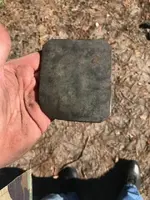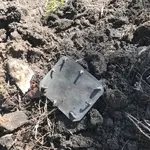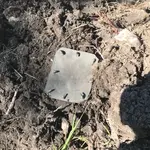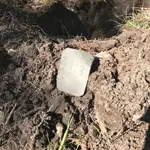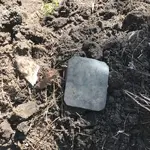I was invited back over to Coastal Georgia this past weekend and found what I thought might be a breast plate. It was found on the same lot as the 1798 Cent that I posted a couple of weeks ago. There's also been several flat buttons and other period items found here. This plate was down about 12" and was covered with oyster shells. So far, I have not been able to put a positive I.D. on it. I did read here that one similar was found and thought to be off of a trunk. Mine has no markings and wouldn't have much use on a trunk. Thoughts?
Attachments
Upvote
11

